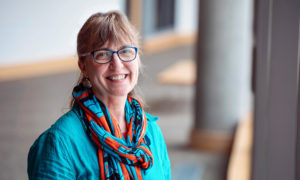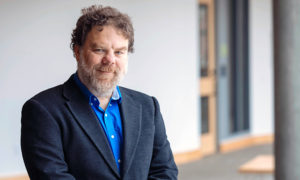Children need nurturing, attention to health and basic needs, safety and appropriate supervision. Child abuse and neglect, also called “child maltreatment,” too often endanger the health, well-being and even lives of children.
Especially for the very young child, maltreatment can result in a variety of serious issues, including physical injury; cognitive delay; disruption of the stress response system that may result in long-term problems with emotion regulation and health; and even death, said Melissa Jonson-Reid, the Ralph and Muriel Pumphrey Professor of Social Work Research at the Brown School at Washington University in St. Louis.
Child abuse is not one thing. It can take the form of physical abuse, sexual abuse, neglect or emotional abuse, and many children suffer multiple forms.

“Older children may be less vulnerable to serious and fatal physical injury but remain vulnerable to emotional harm and injury due to lack of supervision and other issues,” Jonson-Reid said.
“Older children are also more likely to experience multiple forms of maltreatment and other overlapping risk conditions that can increase the likelihood of poor outcomes,” she said. “Older children and youth with histories of maltreatment have higher risk of behavioral, mental health and physical health consequences, including lower school performance, poor mental and physical health outcomes, suicide, long-term adult health problems and more.”
But what can be done to solve it? Jonson-Reid and Brett Drake, professor at the Brown School, offer insight into this prevalent problem and some ideas for change in a new book released Jan. 9 by Oxford University Press, “After the Cradle Falls: What Child Abuse Is, How We Respond To It, And What You Can Do About it.”
“Child maltreatment is a critical issue that is not in the public discourse — until something tragic happens,” Jonson-Reid said. “Typically reactions to the horrific cases, which make it into the news, result in very little actual change that addresses the needs of the millions of children impacted annually who do not experience such extreme conditions. The goal of the book was to try to change this.
“Yes, it can be a complicated issue and there are many problems that need to be addressed, but importantly this is not an intractable lost cause, and people can get involved at multiple levels to change things for the better,” she said. “So we decided to write a book that is heavily grounded in research to provide the public with the facts, but write in an everyday style integrating pop culture, new stories and folklore to demystify the topic and engage a broad audience.”

Drake said it is surprising to him how much disinformation and “simple ignorance” exists around the issue of child maltreatment. “For example, most people understand that state or county child protective service (CPS) agencies exist, but the general public has almost no understanding of what it does or how it operates,” Drake said. “Is CPS a preventative service? Is it just about foster care? Is it part of law enforcement, social services or the public health system? These are questions that the average person just doesn’t have answers for. We wanted to help with that.”
How do we solve this problem?
Jonson-Reid said one way to begin to solve the issue is to focus on parenting.
“We need to stop treating parenting as if it is something everyone can just naturally do without help,” Jonson-Reid said. “Child maltreatment is not something out there that happens in a few odd instances — nor is it a new problem. Estimates are that over one-third of U.S. children have a maltreatment report by age 18.
 “We need to take away the stigma associated with reaching out for assistance before something goes wrong,” she said. “Parenting is not an easy task, and parenting under conditions of multiple stressors and challenges can sometimes lead to actions or inaction that can cause serious harm to a child.
“We need to take away the stigma associated with reaching out for assistance before something goes wrong,” she said. “Parenting is not an easy task, and parenting under conditions of multiple stressors and challenges can sometimes lead to actions or inaction that can cause serious harm to a child.
“The vast majority of child maltreatment does not occur at the hands of an adult who plans to do harm. Even child fatality cases include many instances in which corporal punishment is wrongly applied to a child who is too young or gets out of hand because a caregiver is mad or frustrated,” Jonson-Reid said.
Policy and processes can, or should, be changed. Jonson-Reid suggests there is “a need to rethink” policy toward children in the U.S.
“Despite common use of terms such as ‘child welfare system,’ we actually don’t have a complete ‘system’ for responding to or preventing maltreatment,” Jonson-Reid said. “We have only succeeded in building bits and pieces of a response over the past 100 years, with very little attention to prevention and early intervention. Most of our attention and nearly all of the funding is focused on intervention after situations become severe.” (Estimates are that about 6-7 percent of what is spent on child maltreatment and child welfare in the U.S. is spent on prevention or early intervention with families.)
For Jonson-Reid, timing is of the essence. “Separate from the human cost — a single year’s cohort of children reported for maltreatment costs billions each year — most of this is related to the longer term consequences that might have been avoided if we had intervened early,” she said.
“We need to rethink our policy toward children in this country and build a system that can allow them to thrive. We hope the book helps the public to understand that they have a role to play in their families, their communities, their organizations, and as voters or policymakers.”